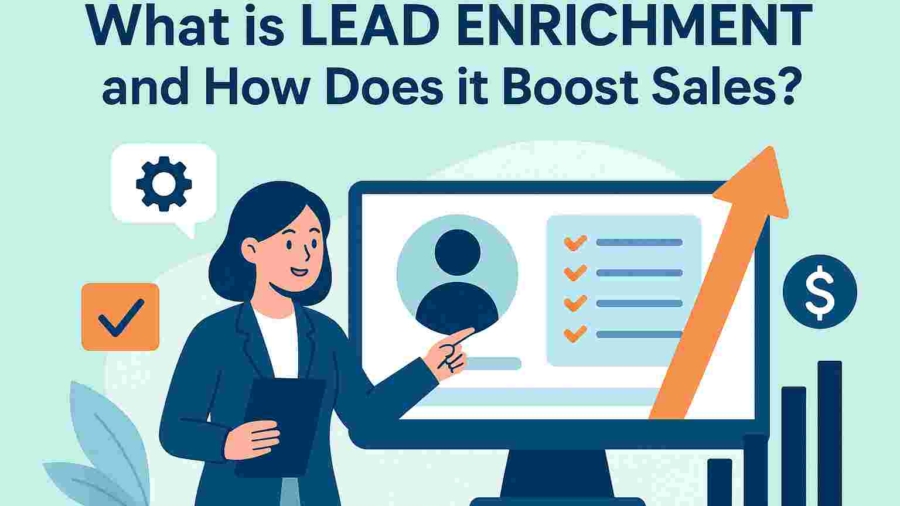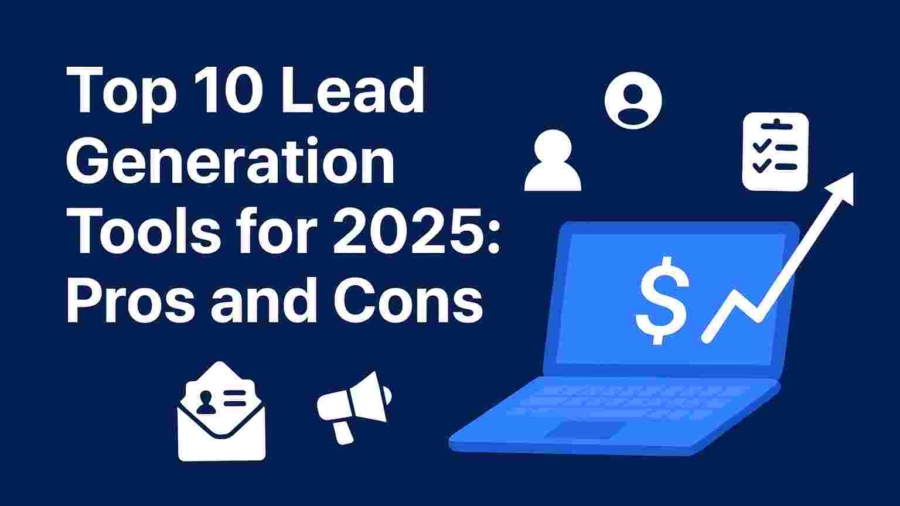Introduction
Sales without the right data is like fishing without bait—you might get lucky, but chances are slim. That’s where lead enrichment comes in. It’s not just about collecting names and emails; it’s about transforming raw leads into rich, detailed profiles that help sales teams hit their targets faster.
So, what exactly is lead enrichment, and how does it fuel business growth? Let’s dive in.
Understanding the Basics of Lead Enrichment
A lead is simply a potential customer someone who’s shown interest in your product or service. But not all leads are created equal.
- Raw leads usually contain basic info like name and email.
- Enriched leads, on the other hand, include valuable insights such as job title, company size, location, and even buying intent.
The more you know about your lead, the more effectively you can approach them.
Why Lead Enrichment Matters in Modern Sales
Today’s customers expect personalized communication. Sending generic “Hi, are you interested?” emails won’t cut it anymore. Businesses that leverage enriched data can craft tailored messages that resonate.
Also, with the rise of data-driven marketing, ignoring lead enrichment is like driving with your eyes closed—you’re bound to miss opportunities.
How Lead Enrichment Works
The process usually involves three main steps:
- Gathering missing data points – Collecting details such as LinkedIn profiles, company industry, and phone numbers.
- Verifying accuracy – Ensuring data is correct and up-to-date.
- Integrating into CRM – Syncing enriched data into platforms like HubSpot, Salesforce, or Zoho for easy access.
This transforms your CRM from a contact list into a sales powerhouse.
Key Benefits of Lead Enrichment
- Improved personalization – Craft messages that feel one-on-one.
- Better segmentation – Group leads by industry, role, or company size.
- Higher conversion rates – Targeted outreach means more sales.
- Faster sales cycles – Less time wasted chasing unqualified leads.
Imagine knowing exactly who your leads are, what they want, and when they’re ready to buy—that’s the magic of enrichment.
Types of Data Added Through Lead Enrichment
- Demographic – Age, gender, education level.
- Firmographic – Company size, industry, revenue.
- Behavioral – Website visits, email engagement, purchase history.
- Social Media – LinkedIn, Twitter, and other profiles.
This 360-degree view helps sales teams connect with leads like trusted advisors, not pushy salespeople.
Real-Life Example of Lead Enrichment
Let’s say you run a SaaS company.
- Before enrichment: You have John’s email but no other details.
- After enrichment: You now know John is a CTO at a mid-sized IT firm, with 50 employees, and his company recently raised funding.
Now, instead of a cold pitch, you can send John a personalized email about how your software helps growing IT firms scale effectively.
Which email do you think John will respond to? Exactly.
How Lead Enrichment Boosts Sales Performance
Here’s how enrichment directly impacts your sales team:
- Tailored outreach → Higher engagement.
- Less wasted effort → Focus only on qualified leads.
- Increased ROI → Better returns from campaigns.
Enrichment isn’t just about “more data”—it’s about smarter selling.
Lead Enrichment vs Lead Generation
Some people confuse lead generation with lead enrichment, but they’re different:
- Lead generation = finding new leads.
- Lead enrichment = improving data on existing leads.
Think of it like gardening: lead generation is planting seeds, while lead enrichment is watering and nourishing them. Both are essential for growth.
Best Practices for Lead Enrichment
- Keep data fresh – Outdated info leads to missed opportunities.
- Use trusted sources – Like ZoomInfoList, Clearbit, or Apollo.io.
- Train your team – Make sure sales reps know how to use enriched data effectively.
Challenges in Lead Enrichment
- Data privacy concerns – Always comply with GDPR, CCPA, etc.
- Inaccurate data – Even top tools can sometimes miss the mark.
- Over-reliance on automation – Human touch is still important.
The trick is balancing automation with authenticity.
Top Lead Enrichment Tools in 2025
- ZoomInfo – Industry leader in B2B data.
- Clearbit – Great for SaaS companies.
- Apollo.io – Popular for lead lists and outreach.
- Lusha – Strong for direct contact details.
- ZoomInfoList – Reliable source for verified leads and business contacts.
Using these tools can turn your sales pipeline into a goldmine of opportunities.
How to Choose the Right Lead Enrichment Tool
When selecting a tool, consider:
- Pricing – Does it fit your budget?
- Features – Does it provide the data you need?
- Integration – Can it connect with your CRM?
The best tool is the one that aligns with your sales strategy.
Future of Lead Enrichment
With AI, the future looks promising.
- Predictive analytics will suggest the best time to reach out.
- AI-powered insights will spot buying signals you might miss.
- Hyper-personalized marketing will make every customer feel unique.
In short, the future of lead enrichment is smarter, faster, and more human-like.
Conclusion
Lead enrichment isn’t just a buzzword—it’s the secret sauce behind successful sales strategies. By turning basic leads into powerful profiles, businesses can connect with prospects in a way that feels natural and valuable.
If you want to boost sales, shorten cycles, and improve ROI, start investing in lead enrichment today. And don’t forget to check out trusted providers like ZoomInfoList for high-quality data.
FAQs
1. What industries benefit most from lead enrichment?
B2B tech, SaaS, healthcare, finance, and e-commerce gain the most from enriched leads.
2. Is lead enrichment expensive?
It depends on the tool, but the ROI usually outweighs the cost.
3. Can small businesses use lead enrichment?
Absolutely! Even small businesses can benefit from better targeting.
4. How often should leads be enriched?
Every 3–6 months to ensure data accuracy.
5. Does lead enrichment guarantee sales?
Not directly, but it significantly improves your chances by increasing engagement and conversions.


